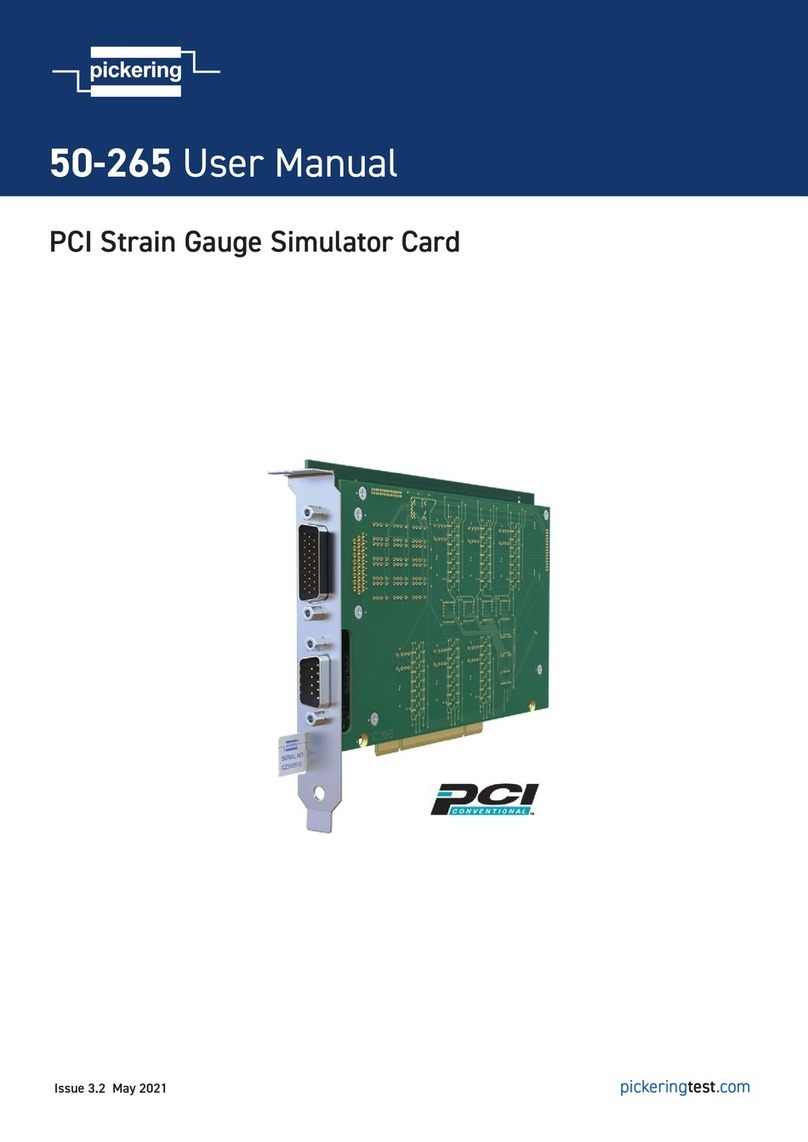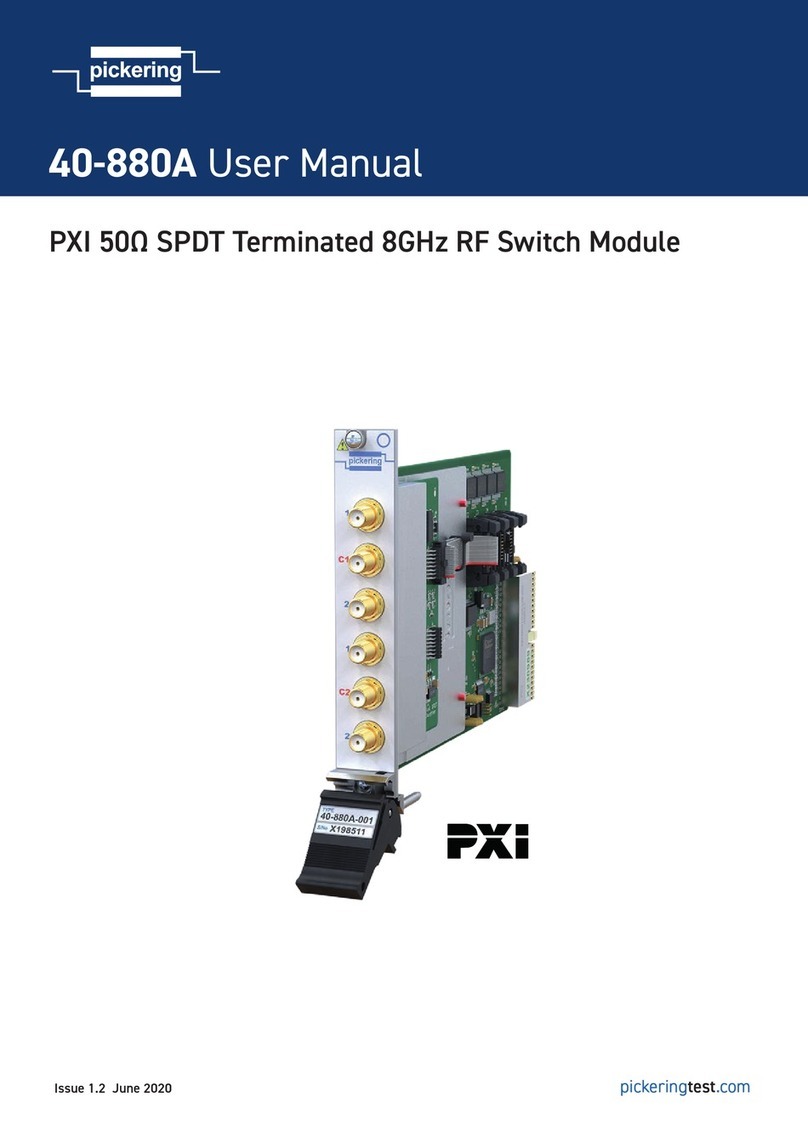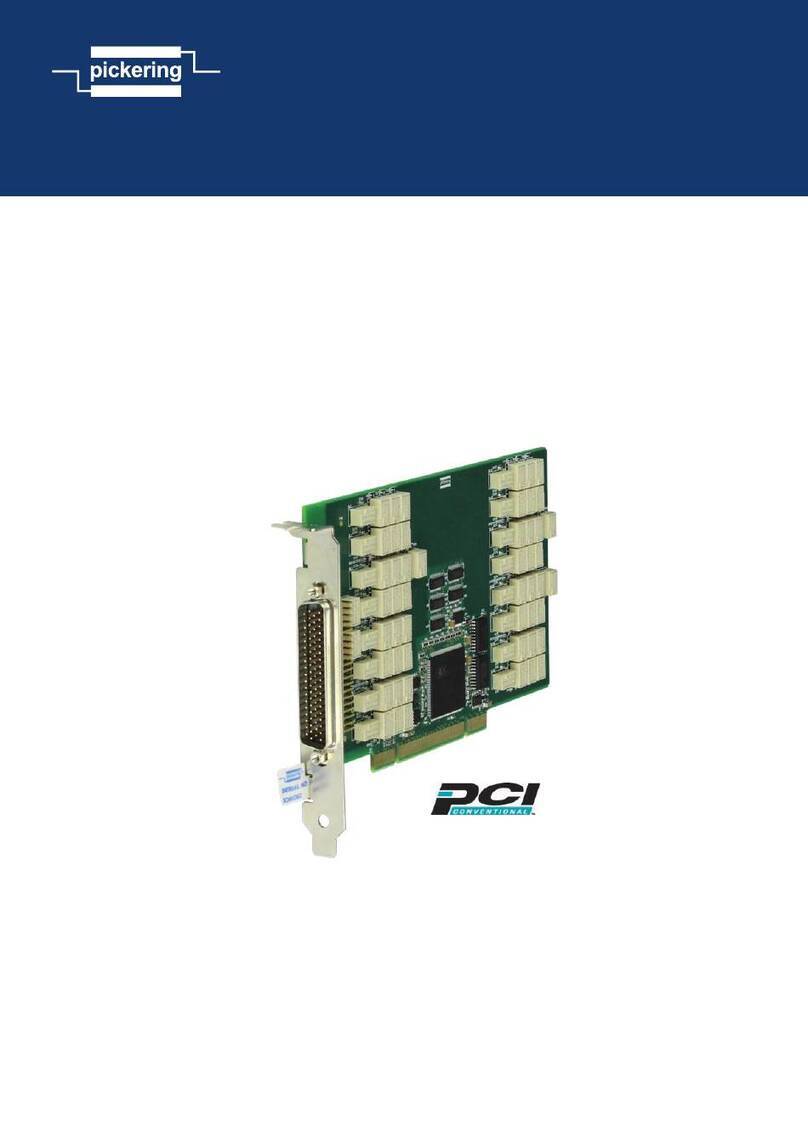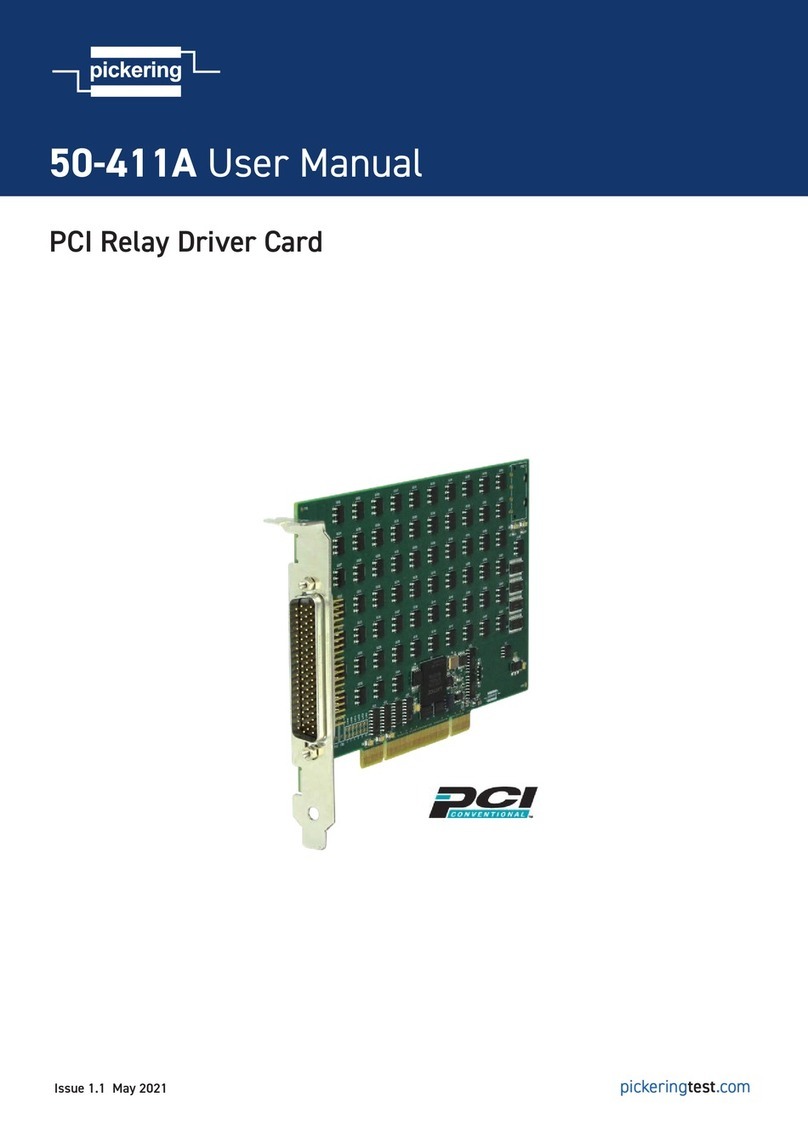
Page 1.2 32-CHANNEL DIGITAL I/O CARD 50-412
pickering
SECTION 1 - TECHNICAL SPECIFICATION
PCI 32 Channel Digital I/O Card, 50-412
pickeringtest.com
Specifications
Output Specification
No. of Output Channels: 32
Output States: Driven high, driven low or off.
Low Side Driver Output
Resistance:
0.6 Ω at 0.5 A
High Side Driver Output
Voltage:
Vext less 1.5 V at 0.4 A
Maximum Current: 0.5 A for Low Side drivers,
0.4 A for High Side drivers,
8 A module total.
Note: for full load conditions,
adequate cooling is assumed.
Maximum Voltage: +50 V*
Output Protection: Current limited, overvoltage
limited, thermal protection.
Overvoltage limit can be used
to limit back emf generated
from inductive loads such as
relay coils.
Vext: User supplied +5 V to +50 V,
applied to multiple pins of
user connector, relative to
front panel ground.
* For full voltage rating, signal sources must be fully
isolated from mains supply and safety earth.
Power Requirements
+3.3 V +5 V +12 V -12 V
200 mA 50 mA 0 A 50 mA
Operating/Storage Conditions
Operating Conditions
Operating Temperature:
Humidity:
Altitude:
0 °C to +55 °C
Up to 90 % non-condensing
5000 m
Storage and Transport Conditions
Storage Temperature:
Humidity:
Altitude:
-20 °C to +75 °C
Up to 90 % non-condensing
15000 m
PXI & CompactPCI Compliance
The 50-412 card complies with the PCI Specification 2.0
(issued Feb 2004).
Signalling Environment: 33 MHz, 32-bit Universal
(+3.3 V & +5 V).
Safety & CE Compliance
All cards are fully CE compliant and meet applicable
EU directives: Low-voltage safety EN61010-1:2010,
EMC Immunity EN61326-1:2013,
Emissions EN55011:2009+A1:2010.
Input Specification
No. of Input Channels: 32
Logic Threshold: Compares selected input
voltage against two reference
voltages, each of which can be
set from 0.3 V to 50 V with
12.5 mV setting resolution.
Settling Time: 50 µs following a state change
or channel selection.
Typical read back time for all
32 states 1.3 ms.
Channel Selection: Single channel selection or
automated sequential access
to all 32 channels.
Maximum Input Voltage: 100 V*
Input Impedance: 1 MΩ
* For full voltage rating, signal sources must be fully
isolated from mains supply and safety earth.
Mechanical Characteristics
Single slot short PCI format.
Card weight: 130 g.
3D models for all versions in a variety of popular file
formats are available on request.
Connectors
Signals via a 78-pin male D-type connector, for pin outs
please refer to the operating manual.


































